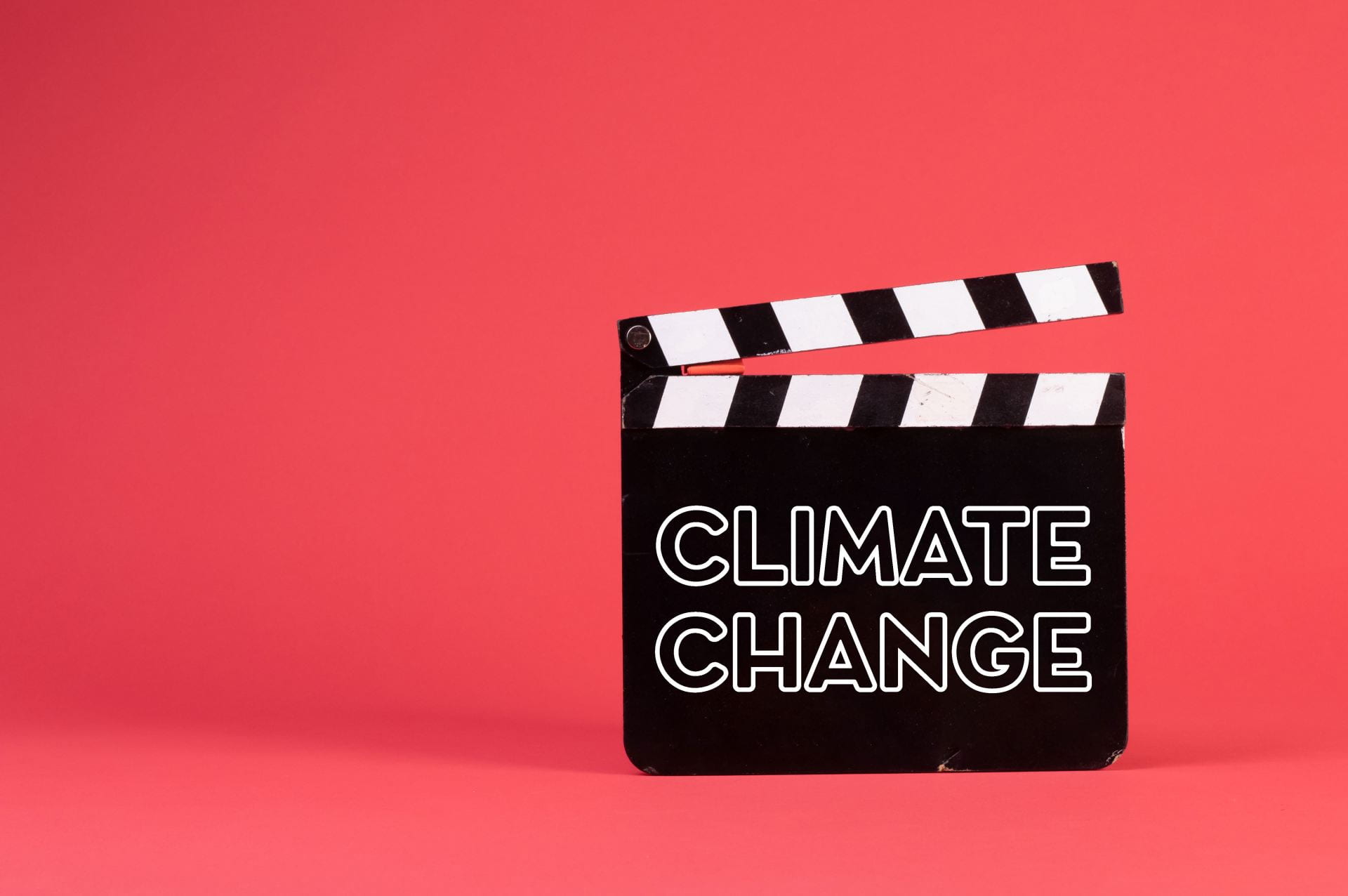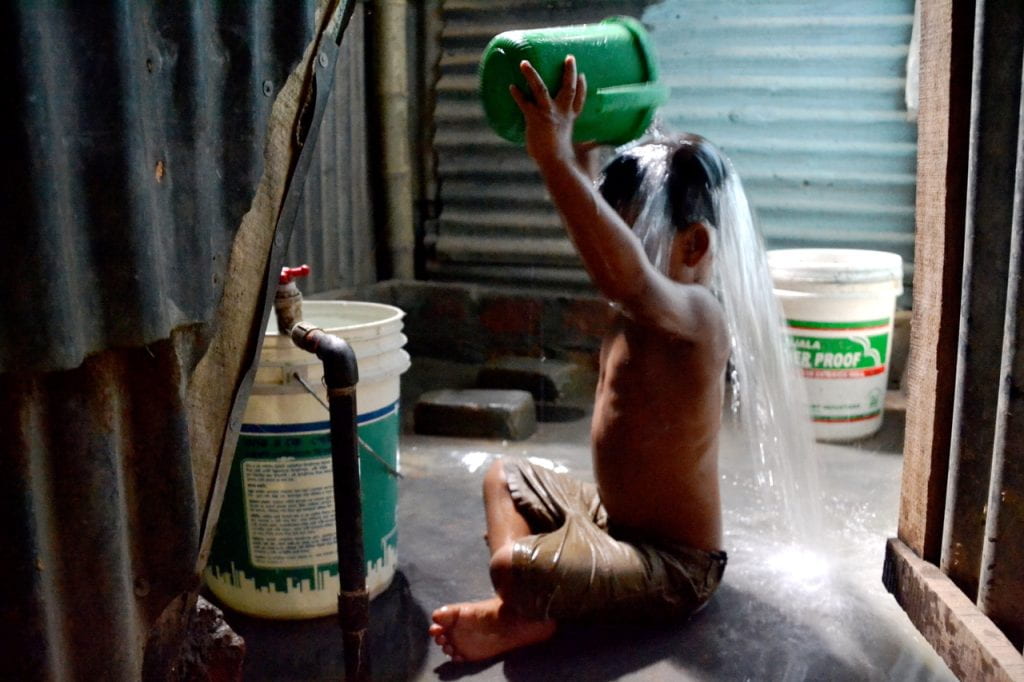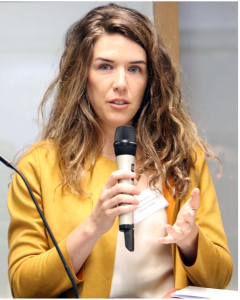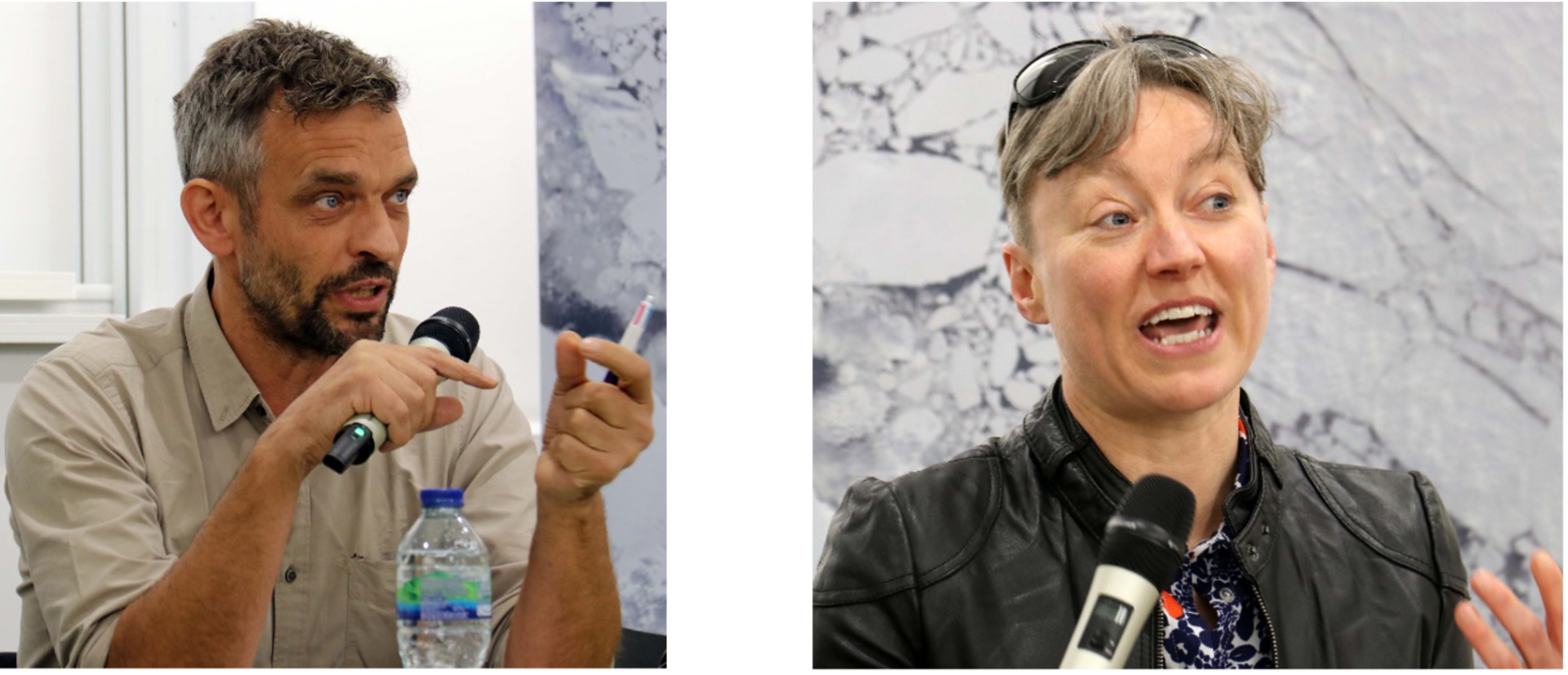Including local voices in assessing adaptation finance: testing an approach in Nepal
By Jonathan Barnes, on 8 May 2024
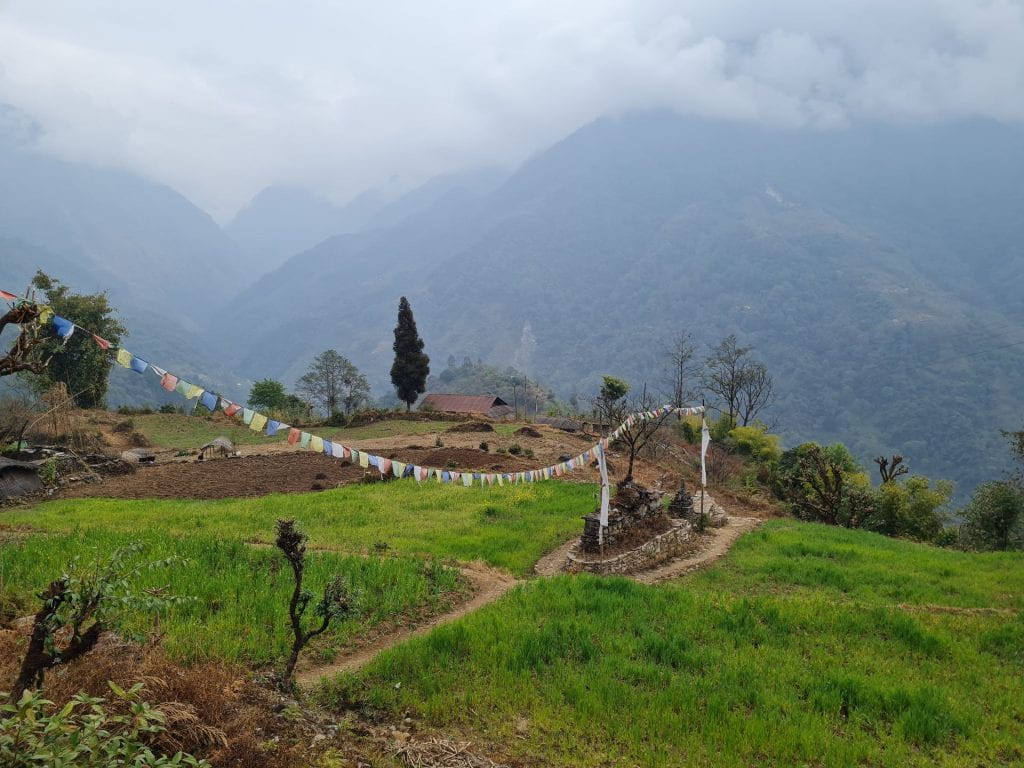
Finance is central to international agreements on climate change. Developed countries channel money to developing ones to help fund energy transitions and adaptation to the impacts of climate change reflecting historical responsibility for the climate crisis. Money for adaptation is often spent on building awareness about climate risks, response capacity, and climate-proofing infrastructure. Policymakers have focused on assuring taxpayers that money is being well spent through metrics and management tools. There is a gap in making sure the funds meet the needs of people affected by climate change. This is the adaptation accountability gap.
To explore alternative tools for building local accountability researchers from Practical Action in Nepal and UCL’s Accountable Adaptation Project travelled to Naumile in Karnali Province, Nepal. Our trip was part of a wider research programme exploring how measurement and knowledge practices shape adaptation.
Locally-led adaptation: does the reality match the rhetoric?
Donors, development agencies and multilateral funds and banks have committed to fund more locally-led adaptation (LLA). A top-down model is often less effective and efficient, excluding people from decisions that affect their lives and futures. Facilitating feedback to those channelling finance offers one way to build accountability, making adaptation more responsive to local needs.
The International Institute for Environment and Development, a UK based thinktank, has developed scorecards to record people’s experiences, providing a numeric assessment of project alignment to LLA. This has been piloted in Bangladesh, Ecuador, Nicaragua, Costa Rica, and Indonesia. These can help recipients to hold donors and intermediaries along the climate finance delivery chain (FDC) to account.
However, these do not meet the needs of the communities consulted. The pilots highlight the need to co-produce local approaches to secure meaningful and honest participation.
Our visit to Naumile was the first step towards this in Nepal. Naumile is a rural area in the Dailekh District of Karnali Province. The village has received money for adaptation projects since 2013 under the National Climate Change Support Programme. This channels money from the UK Foreign and Commonwealth Development Office through national and local government systems to fund locally identified projects. We wanted to understand how people felt about the existing local feedback mechanisms and sought to co-produce an approach for collecting and communicating feedback for this FDC, ultimately to achieve more effective adaptation to climate risks.
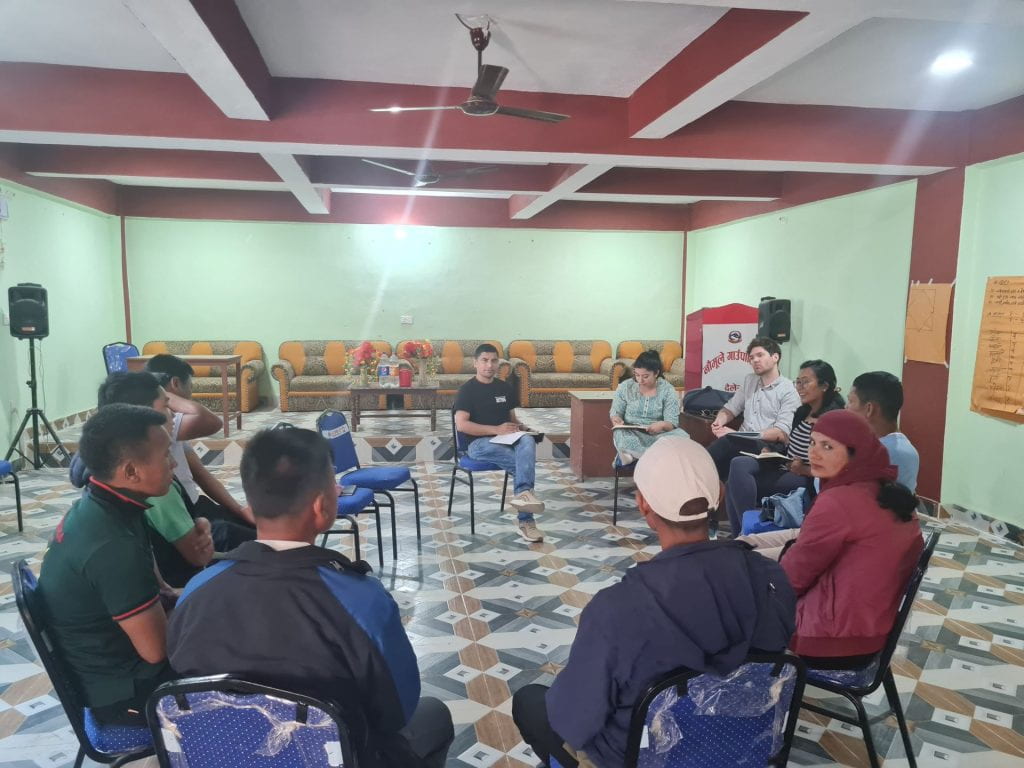
How the Naumile user committee want to participate
We met a local committee involved in managing the project in the community hall, next to a storm drain being built by the project. This group oversees project implementation and monitoring and evaluation. It consists of nine democratically elected men and women. The community members insisted any feedback and accountability mechanism must be deliberative and democratic. They were clear and unanimous that people should not be consulted individually, and that everybody should get their opportunity to speak – ideally directly to donors. Existing accountability processes such as public hearings and direct dialogues with local government are seen to be working well and could be built on for adaptation. The user committee participates in a monitoring and evaluation subcommittee that provides feedback this way, and the consultation suggested strengthening existing mechanisms. The committee also rejected quantification of their views. They felt this couldn’t capture the lived experience and can misrepresent their opinions.
Key features of the approach:
- Build on existing feedback and accountability mechanisms; public hearings, grievance procedures and suggestion boxes
- Democratic and deliberative focus groups, mediated by local facilitator. Everyone must be heard and opinions must not be reduced to numerical values
- Direct dialogue with government and donor representatives
- Outside support is welcome for facilitation, but the process must be transparent and result in tangible change and feedback from others.
Time and power
Members of the user committee are happy to share views but want more transparency about how their feedback is used. Donors and intermediary organisations claim to be willing to respond to local inputs, but this has not translated into tangible changes. Without more feedback on decisions made in response to local consultations the committee members questioned if it is worth their time to keep participating. People have busy lives. Any accountability mechanism must work around busy periods such as harvest and the rainy season.
We still don’t know whether people would be comfortable sharing their honest opinions about projects, even with a local facilitator. The incentives to maintain good relationships are clear. This could undermine the quality of feedback, and mask challenges. Those we spoke to reassured us that this would not be a problem, in turn highlighting a complex issue relating to the representation of the committee. Does this group represent everybody in the community? How does it intersect with local power dynamics? Members may have vested interests to report favourably, not reflecting wider community feeling. More generally, this governance structure might align well with the principles for LLA whilst consolidating power and resource access amongst a portion of the community.
Way forward: from feedback to accountability
We have gained insights about collecting community level feedback to enhance accountability for LLA in Nepal. The co-produced method in Naumile needs tailoring for other parts of Nepal and researchers must be attentive to who’s views are included.
Bigger questions about accountability in adaptation emerged. Whilst people we consulted opposed the quantification of their views, the project’s impact is quantified in other ways. By rejecting the international language of numbers and metrics, the people of Naumile are marking their feedback as qualitatively different, rendering it difficult to translate insights to national or international spaces.
Taking a wider perspective, if local recipients report a project is working well, does that equate to accountability? Accountability is more than generating information or transparency, it requires that actors in the FDC act on feedback, leading to meaningful change. Being accountable to those most affected by the climate crisis means long-term change in the face of multiple and cascading risks. Individual success stories must lead to wider learning and behaviour change if we are to achieve this.
Jonathan is a critical human geographer interested in environmental policy, social transitions and sustainable finance. His work draws on post-structural theory to explore the effectiveness and equity of climate finance. He is a Research Fellow in Climate Change Adaptation on a UKRI Future Leaders Fellowship, exploring the politics of knowledge in climate change adaptation. His PhD research, carried out at the London School of Economics (LSE), explored Green Climate Fund (GCF) project development in South Africa through a climate justice lens.
The views expressed in this blog are those of the author(s).
Read more IRDR Blogs
Follow IRDR on Twitter @UCLIRDR
 Close
Close


